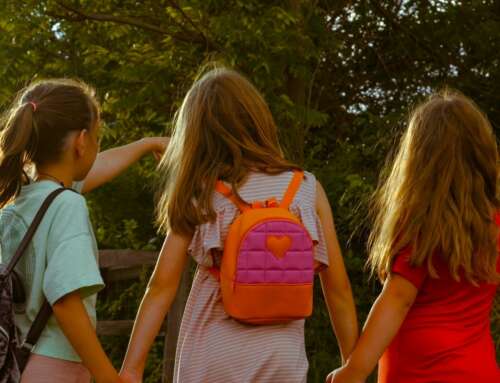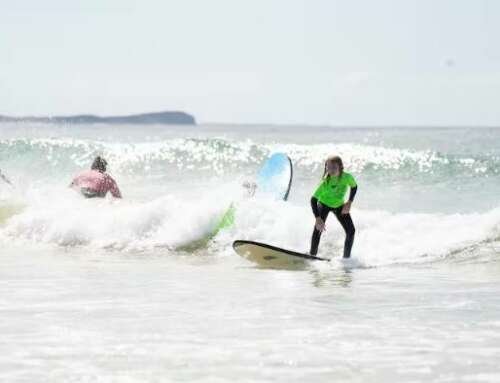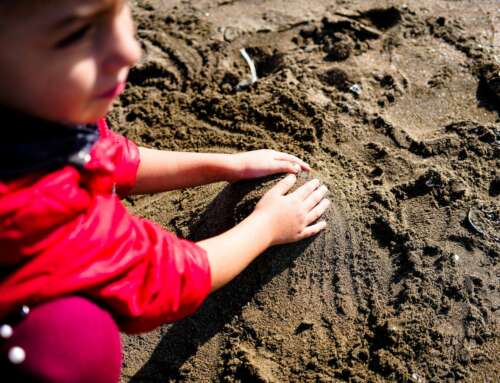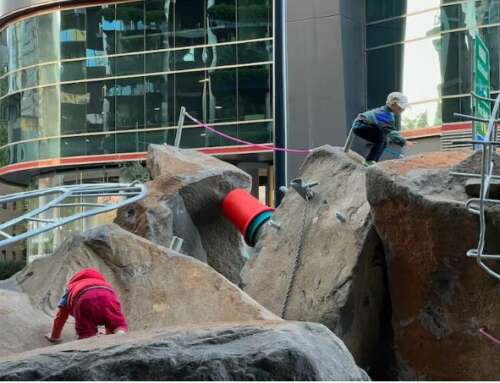Anne-Marie Morrissey, Deakin University and Deborah Moore, Monash University
Choosing a childcare centre for your child can be a challenging process.
To start with, choices may be limited if there are not many childcare centres in the area where you live or work. Or if the waiting lists are full. We know there are “childcare deserts” around the country.
But if you do have choice, what should you look for? Parents may already be looking for warm, caring educators and a centre with good accreditation ratings. What may be less well known is a childcare centre’s physical environment – its location and indoor and outdoor spaces – is also important.
Research shows physical environments have a major influence on children’s health, wellbeing, development and learning.
We are early childhood researchers and in a recent study, we highlight four important features for parents to look for in a childcare centre’s physical environment. These are based on children’s right to a safe and healthy environment.
Our study
In Australia, property developers are increasingly investing in childcare centres. They have become powerful influences on where childcare centres are and how they are designed.

Childcare in Australia is run by a mix of for-profit and not-for-profit providers. Photo by Markus Spiske on Unsplash
In addition, childcare in Australia is increasingly provided by for-profit organisations. As of 2020, 49% of childcare services were by for-profit organisations. On the share market, childcare centres are seen as a smart investment.
There are regulations around childcare environments such as space, fencing and resources, but these are minimal requirements. This can mean children’s health, wellbeing and development are not always seen as the top priority when designing centres. Here are four questions parents can ask when looking at potential childcare centres.
1. Is it near a busy road?
Many childcare centres are located on busy roads. Government planning regulations can encourage this. In the planning process, residents in quieter streets may complain about possible noise and traffic from a childcare centre. Busy road sites often also represent greater investment value for property developers as they can be cheaper.
Unfortunately, these sites potentially expose children to toxic traffic emissions, including hazardous small particle emissions, linked to the development of asthma and allergies. The closer a centre is to a busy road the greater the danger.
If possible, avoid childcare centres that are next to roads with four lanes or more of constant traffic, especially heavy and diesel vehicles.
2. Is it very noisy?
It is important to consider the noise levels your child may consistently experience in a centre. Noisy environments can disrupt the important interactions between educators and children.

Dean Bennett/Unsplash
Is there a roar of traffic from busy roads? When inside, is it noisy due to large numbers of children grouped together? Or is there a lot of echoing due to hard surfaces?
If staff and children struggle to be heard and always need to raise their voices, this can make it harder for children to develop social and language skills.
Noisy environments are particularly concerning for babies and toddlers, children with disabilities, and children who have a first language other than English.
So try to avoid centres where your child will be exposed to constant excessive noise.
3. Is there limited or no outdoor space?
Increasingly, childcare centres are requesting waivers for the provision of outdoor space to play. Regulatory bodies can grant exemptions here if centres are seen to be meeting a local demand for enrolments. So some centres only have tiny outdoor areas, some have none at all.

Khoa Phẩm/Unsplash
Childcare providers may incorrectly claim an indoor simulated outdoor space (for example, fake grass and painted jungle murals) is an adequate substitute for outdoor space to play.
Children need sun-safe time outside for healthy vitamin D levels (which keeps bones and muscles strong), a sense of wellbeing, and for healthy sleep patterns.
There is also growing evidence that children need around 10–15 hours per week of exposure to natural outdoor light (including in the shade or on a verandah) to ensure healthy vision development and to avoid developing short sightedness.
Children love being outdoors and we recommend looking for a centre that provides well-shaded outdoor play areas that enable plenty of time outside. We also recommend you avoid centres with limited or no outdoor spaces for play, especially if you are enrolling your child full-time.
4. Are there natural features?
Unfortunately, artificial turf and rubber surfaces surfaces are frequently being installed in childcare settings due to the perception of easy maintenance.
These can create extremely hot and dangerous surfaces that use potentially toxic chemicals.
Totally flat, artificial surfaces do not provide as many opportunities to develop motor skills as varied and natural surfaces.
Surfaces that include slopes and levels with materials such as tanbark, gravel, dirt and sand are better.
Research has also shown outdoor areas dominated by equipment and artificial surfaces do not support children’s wellbeing or learning through play. Natural environments provide more challenge, variety and interesting resources for children to use in their creative play.
So, look for centres with trees, shrubs, rocks, mud and other natural features to complement artificial materials and equipment in their outdoor spaces.
Knowing what to look for
We appreciate it can be very difficult to find a childcare centre with available spots that suits work and family needs.
But if you do have a choice, it’s worth being aware of how a childcare centre’s location and design can protect children’s health and wellbeing and support their play and social interactions. Knowing what to look for in the physical environment of a centre will help you choose a centre where your child can thrive.
Anne-Marie Morrissey, Associate Professor, Early Childhood Education, Deakin University and Deborah Moore, Associate Lecturer in Education, Monash University
This article is republished from The Conversation under a Creative Commons license. Read the original article.
Feature photo by Jelleke Vanooteghem on Unsplash

After more on this topic?
Check out our courses on the Generation Next eLearning Hub Green Space and the Power of Nature Play for the Developing Brain and Heavy Metal Contamination. They are part of a library of learning you can access on-demand by becoming a member.
You may also like to check out our free podcasts where Andrew Fuller speaks with leading experts Prof Mark Taylor on Heavy metals, other environmental contaminants, the brain and childrenand Dr Rachael Sharman on Nature deprivation syndrome – The importance of green space for mental health.








Leave A Comment